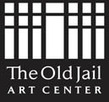Henri de Toulouse-Lautrec, Au bal masqué – les fêtes parisiennes – nouveaux confettis (Masked Ball), 1892, watercolor, India ink, graphite on paper. Bequest of Marshall R. Young Jr. 2001.013
Looking back 120 years ago, many Americans had their first opportunity to see works of art by Pablo Picasso, Henri Matisse, Marcel Duchamp, Paul Gauguin, Paul Cézanne, and Vincent Van Gogh, all together for the very first time. This extraordinary event, the International Exhibition of Modern Art, became more widely known as the Armory Show of 1913. It still ranks as the most influential art exhibition ever held in America.
The Armory Show was an ambitious installation of nearly 1,400 objects that included both American and European works. It was organized by a group of young artists who called themselves "The Association of American Painters and Sculptors." This small group raised money, rented the expansive 69th Regiment Armory building, transported the art, staged the exhibition, and generated publicity—all without public funding. The three-city exhibition began in New York City, then traveled to Chicago and Boston, where more than 250,000 visitors paid to see the art.
The Armory Show is best known for introducing Americans, who were accustomed to realistic art, to the experimental styles of the European avant-garde. Critics reviled the experimental art as "insane" and an affront to their sensibilities, and the public responded with hostile demonstrations. The controversy, heightened by the media, stirred up considerable public interest in modern painting and sculpture. Nevertheless, the Armory Show did manage to find some supporters and had a hugely beneficial effect on artists and dealers. The polemical responses to the show have come to represent a turning point in the history of American art.
Historically, abstract painting would not supercede realism in America for another 30 years, but the Armory Show initiated a vital link between Europe and the United States. Over the next three decades, thousands of European artists took advantage of this link (especially during the 1930s) to seek sanctuary for themselves and their families, influencing numerous American artists in the process. Thus began an important two-way exchange of artists and creative ideas, which contributed directly to the emergence of New York as the center of the art world.
More than anything else, the Armory Show was about freedom: new ways of thinking and seeing, and individual expression. The show’s motto, "The New Spirit," was connected not just to changes in the visual arts, but also to social, cultural, and political transformations in the early part of the last century. The OJAC is proud to uphold this new spirit with representation of the following influential artists whose work was included in the original Armory Show.
Georges Braque
Pierre Puvis de Chavannes
Andrew Dasburg
Honoré Daumier
Francisco Goya
Gaston Lachaise
Marie Laurencin
Henri de Toulouse-Lautrec
Wilhelm Lehmbruck
Aristide Maillol
Henri Matisse
Jules Pascin
Pablo Picasso
Pierre-Auguste Renoir
Georges Rouault
John Sloan
Jacques Villon
Amy Kelly
Collections Manager / Associate Curator



